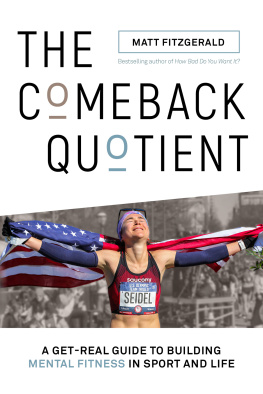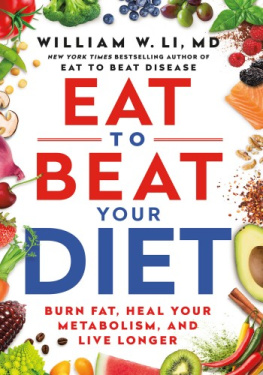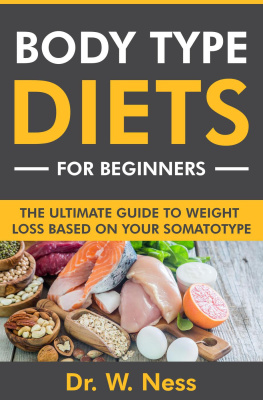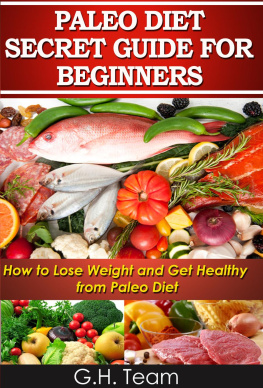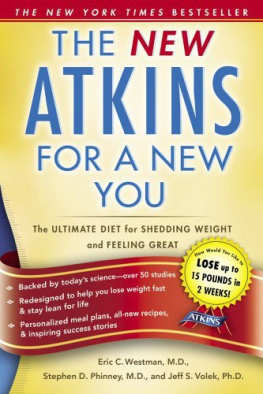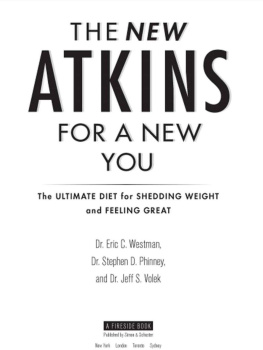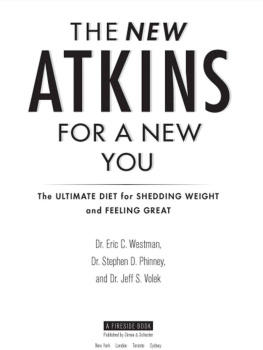
Diet Cults
The Surprising Fallacy at the Core of Nutrition Fads and a Guide to Healthy Eating for the Rest of Us
MATT FITZGERALD

DIET CULTS
Pegasus Books LLC
80 Broad Street, 5th Floor
New York, NY 10004
Copyright 2014 by Matt Fitzgerald
First Pegasus Books edition May 2014
Illustrations 2014 Steve Delmonte
Interior design by Maria Fernandez
All rights reserved. No part of this book may be reproduced in whole or in part without written permission from the publisher, except by reviewers, who may quote brief excerpts in connection with a review in a newspaper, magazine, or electronic publication; nor may any part of this book be reproduced, stored in a retrieval system, or transmitted in any form or by any means electronic, mechanical, photocopying, recording, or other, without written permission from the publisher.
Library of Congress Cataloging-in-Publication Data is available.
ISBN: 978-1-60598-560-2
ISBN: 978-1-60598-595-4 (e-book)
Distributed by W. W. Norton & Company
For Devante
It is not what enters into the mouth that defiles the man, but what proceeds out of the mouth, this defiles the man.
Matthew 15:11
Diet Cults
W hen I was in college I attended a debate between a philosopher and a theologian. The two men squared off over the question of Gods existence. The theologian scored a knockout when he got the philosopher to confess his belief in objective morality and then delivered a logical proof demonstrating that only God could be the source of objective morality.
The funny thing is that, according to the Bible, morality did not come from God. It came from food. It says so right there in Genesis, on page one, as a matter of fact. We all know the story. The world is newly created, and only one man inhabits it. God plants a special tree in the Garden of Eden and tells Adam, From any tree of the garden you may eat freely; but from the tree of knowledge of good and evil you shall not eat, for in the day that you eat from it you will surely die. Unfortunately, Adams wife Eve, who is created immediately after this warning is delivered, falls under the influence of a talking serpent and eats the forbidden fruit, and Adam, choosing loyalty to his wife over obedience to God (as Id like to think I would have done in his place), eats too. Instantly the couple becomes ashamed of its nakedness, and weve been burdened with consciencesparticularly food consciencesever since.
While the story of the forbidden fruit may be fanciful, I believe that it is substantively accurate. That is to say, I believe that a distinctively human morality really was born from food, through a collision between instinct and language. My historical explanation goes back a little farther than the biblical one, though.
I said a distinctively human morality just now because a form of morality exists in many if not most animals. It has been observed, for example, that a hungry lab rat wont eat if eating causes a fellow rat to experience a painful shock. Mother hens are known to mirror the distress of their chicks. The brains of monkeys contain structures that are almost identical to structures in human brains that host our empathetic instincts.
Human morality is undeniably more sophisticated than the proto-morality of other animals, however. Only a human being would leap to his death from a twelfth-floor balcony after photographs in which he is seen dressed in womens underwear are exposed on the Internet, or despise a fellow human being for no reason other than that he believes in a different way of eating.
How did human morality become so much more complex and nuanced than the inborn sense of right and wrong we see in other species? Well, food had a lot to do with it.
The World Is Our Oyster
It all started more than six million years ago, when an ape species similar to the modern chimpanzee underwent an evolutionary split. One line of descendants changed a little and became our cousin the chimp. The other line changed a lot and became homo sapiens. Scientists believe that the cause of the split was the decision made by some of those primeval apes to venture out of the trees and onto the African savanna. It is suspected that climate change influenced this decision. Specifically, a period of increasing dryness may have caused the savanna to encroach onto jungle territory, shrinking the apes food supply. The most clever, adaptable, and adventurous apes dropped from the leafy branches to the grassy plains in search of alternative foodsand found them.
The adaptability of these clever apes was paid forward to future generations in the form of evolutionary changes that made them ever more adaptable. Over the span of millions of years, a succession of hominid species descending from the first floor-dwelling primates became increasingly adept at surviving in all kinds of terrestrial environments. Archeological evidence suggests that most of the changes that occurred in the process by which homo sapiens evolved from the earliest hominids generated creatures that were capable of finding, gathering, capturing, killing, cultivating, and domesticating a greater variety of foods. Our species emerged as the master omnivore of planet Earth, capable of extremely diverse eating but also dependent on dietary diversity, both physically and psychologically. We are not koala bears that can blithely thrive on eucalyptus leaves alone.
Above all else it was a large and growing brain that made the succession of species between the proto-chimps of seven million years ago and modern humans increasingly dietetically adaptive. Novel brainpower enabled the hominids of the Paleolithic period to invent tools and techniques that brought more and more foods into their diet. Big brains also furnished them with communication skills that supported sophisticated methods of cooperative food foraging, as well as reasoning skills that were used to make smart dietary choices as new options presented themselves. At least 164,000 years ago, for example, one human gambled on wading into the sea to extract shellfish to eat, and his success added seafood to the diet of the species.
Dietary experimentation is risky, though. Whenever a creature eats something it has never eaten before, there is a chance of disaster. There must have been many a disaster throughout the prehistory and early history of our species as we continually put strange stuff in our mouths to learn whether or not it was good to eat. Consider the example of strychnos nux-vomica, a plant that produces fruit that is attractive, sweetly fragrant, and poisonous, so that our ancestors in Southeast Asia and Australia (where the plant is native) were beguiled into tasting it and met with deadly consequences when they did. Yet the fruit of the strychnos nux-vomica is almost indistinguishable from the bael fruit, which, although terrible-tasting, is nontoxic and even medicinal. As they say, you never know until you try.
The knowledge gained through such experimentation was transmitted from person to person, generation to generation, in the form of rules about eating. Almost from the very beginning, this passing down of collected food lore must have carried a moral element, because even rats have enough inborn conscience to go hungry if eating hurts another rat. As our brains grew larger and our language skills more sophisticated, this moral element intensified.
Distinctively human morality was bornsymbolically, anywaywhen eating unhealthy food changed from a mere bad idea into a wrongful act . Among the first recognized crimes was that of eating things verboten (a crime that delivered its own penalty as often as those taboo foods were poisonous). Perhaps even older is the crime of feeding forbidden things to others with bad intent, as that talking snake did to poor Eve in the Garden of Eden.
Next page



